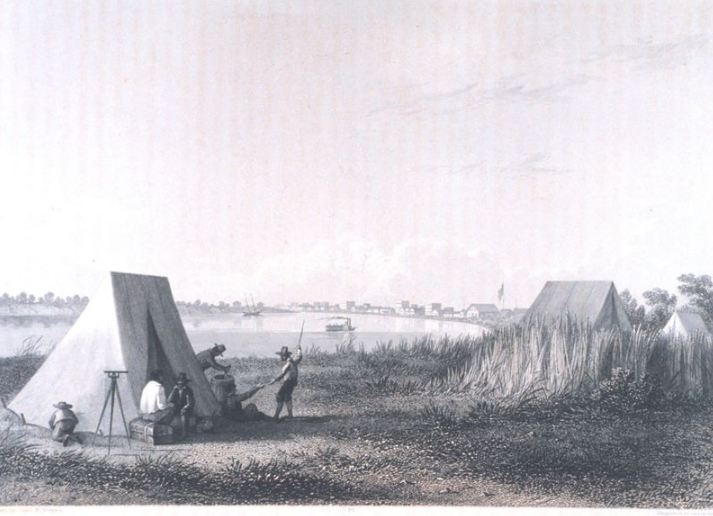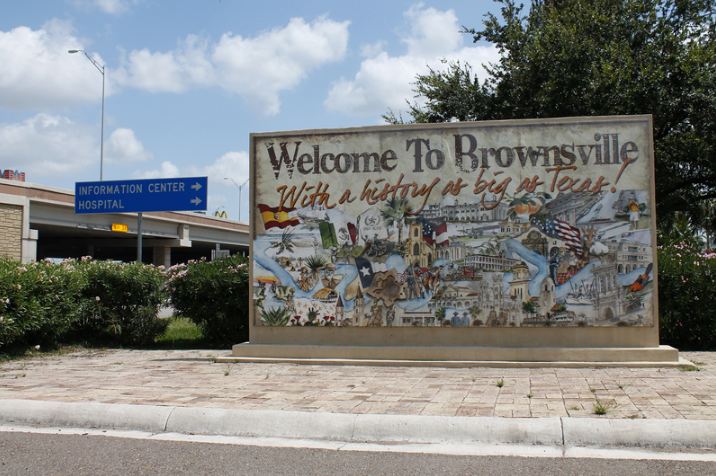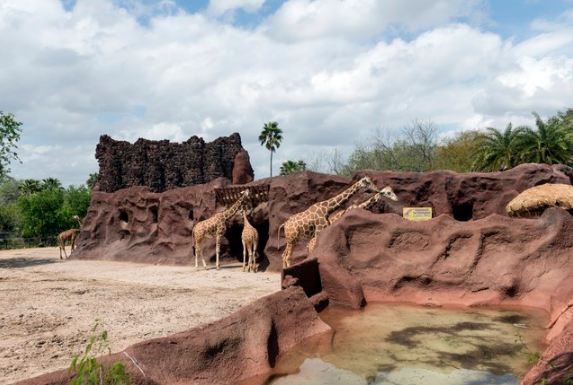Brownsville is a city and seat Cameron County, located in the extreme southern part of Texas. It lies along the Rio Grande that borders the city of Matamoros, Mexico. Its port is the only deep-water seaport on the US-Mexico border. Check out the general guide to south Texas.
A short history of Brownsville
Although the region now known as Brownsville was explored as early as the 17th century, the first settlers did not arrive until the latter part of the 18th century.
In 1781, the government of Spain granted 59 leagues (408 square meters) of land to José Salvador de la Garza. Not long after officially receiving the land title, de Garza died, leaving his property to his wife and three children. During the 1800s, the region was known as los tejidos (“pasturelands”). After Texas declared itself independent from Mexico, a few people settled in the area.

On March 28, 1846, under the instructions from US President James Polk, Zachary Taylor and his troops began moving southwards towards the area, which is the present-day Brownsville. Taylor placed a map on the site, then part of Matamoros, and built Fort Texas. Taylor’s arrival signaled the Mexican-American War (April 25, 1846 – February 2, 1848). Brownsville was the site of numerous battles, including the Battle of Palo Alto and the Battle of Resaca de la Palma. Fort Texas was renamed Fort Brown in honor of Major Jacob Brown, who died in the Battle of Resaca de la Palma on May 9.
Brownsville was incorporated as a city on February 7, 1853.
During the Civil War, Brownsville used to smuggle Confederate goods into Mexico. After the war, Fort Brown served as a military hospital. In 1882, Dr. William Crawford Gorgas was assigned to the hospital during the height of the yellow fever outbreak. During his years at the hospital, Dr. Gorgas conducted extensive research on yellow fever and the treatment for the disease. Fort Brown was decommissioned on February 1, 1946.
In 1906, the city became the site of the Brownsville affair, where a group of black infantrymen, called Buffalo Soldiers, were unjustly accused of murdering a white bartender and wounding a white police officer. It resulted in racial tensions between white people and black soldiers who were stationed at Fort Brown.
Racial tensions also continued between whites and Mexicans, which plagued the city throughout the 20th century.
The 1960s and the 1970s witnessed a period of significant growth in Brownsville. By 1970, the city’s population had increased to 55,522. Much of Brownsville’s population growth came from immigration from Mexico, but the city also saw new residents coming from the North and Midwest.
By the 1990s, Brownsville’s industry had expanded and diversified: petrochemicals, food processing, and manufacturing various products ranging from paper bags to beverages to metal. The city’s population had increased even further to 107,027. By 2000, Brownsville had had 139,722 residents; and by 2010, it was 175,023.
Although whites make up the majority of the city’s population and still own most of its wealth, the last several decades have witnessed the growth of the Hispanic middle-class population. They have also begun to take a more active part in Brownsville’s community and political affairs.
Interesting random Brownsville facts
The Port of Brownsville, which opened in 1936, serves as a southern terminus of the Gulf Intercoastal Waterway. It lies in the mouth of Rio Grande and Lower Rio Grande Valley plain, a mere eight miles (13 km) north of the US-Mexican border. The only deep-water seaport on the border, the port of Brownsville handles several different cargoes ranging from oil to grain to shrimp.
On Christmas Day of 2004, Brownsville residents experienced snow for the first time in 109 years! The first recorded snowfall occurred on Valentine’s Day, 1895.
Actor and musician Kris Kristofferson was born in Brownsville in 1936.
Brownsville can lay claim to the distinction as the largest city located in the Rio Grande Valley. This is a fact whether you are comparing its size or population.
As Brownville is located close to the border with Mexico, you can expect to find a melting pot of cultures and influences when you’re in the city. The Charro Days Fiesta is an annual four-day festival that occurs before the Lenten season and combines Texan and Mexican cultures. Music, street dancing, the wearing of colorful traditional costumes, boat races, fireworks, rodeos, and bullfights are some of the traditional activities. The Sombrero Festival is another joyous pre-Lenten festival that boosts the spirit of the Charo Days. It includes traditional activities, such as a jalapeño-eating contest, fun runs, dance, music, food stands, and cooking contests.
Brownsville is the home to Gladys Porter Zoo (pictured), rated as one of the best zoos in Texas.
Anyone looking for history and culture won’t be disappointed in Brownsville. The city also boasts a wealth of park and nature spaces, museums, art galleries, and places for shopping ranging from farmers markets to shopping malls.
Brownsville today is generally a safe and peaceful city, a far cry from its chaotic and tumultuous past. It has become a mecca for tourists year-round. It’s an endlessly interesting, exciting, and wonderful place where everyone, including families and lovers of history and culture, can come for a weekend trip or an epic holiday.



